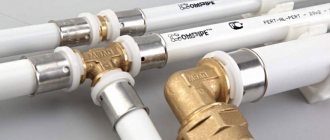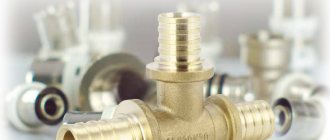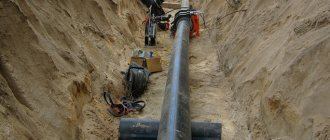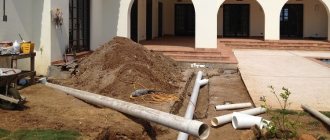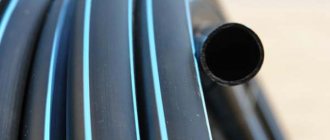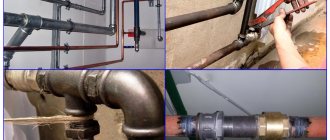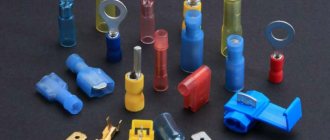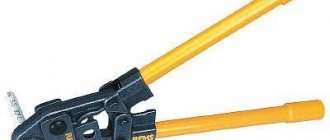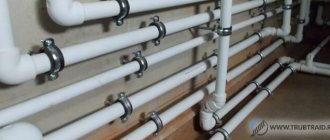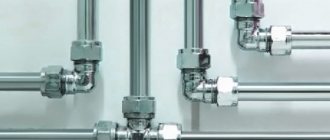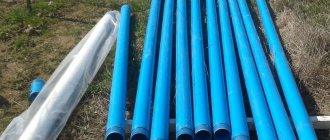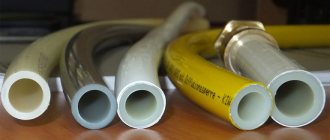Hello, dear readers! To assemble pipelines from modern materials, welded connections are almost never used, but fittings are used. They allow you to quickly assemble a reliable and sealed network from individual elements. And if you need to replace a damaged section or connect an additional line, you just need to unscrew one of the connectors. Today we will look at fittings for metal-plastic pipes, the rules for their selection and installation features.
Device and purpose
Fittings for metal-plastic pipes consist of a hollow body with two or several outlet holes (depending on the number of branches). Each outlet is equipped with a threaded fitting, which is inserted into the part to be connected. The threaded connection is supplemented with a union nut or ferrule.
To seal the joint, elastic gaskets made of vulcanized rubber are used. The body is usually made of brass, bronze or polymer materials - PPSU, PVDF. To protect against corrosion, metal products are nickel-plated or coated with a layer of tin (tinning).
Shaped connectors are used to assemble:
- Internal cold and hot water supply networks.
- Heating system wiring.
- Connections to mixers.
- Flush fittings for toilet cistern, etc.
Advantages and disadvantages
The advantage of using fittings for assembling pipeline systems from metal-plastic pipes is:
- The simplest and fastest installation possible.
- Possibility of connecting metal-plastic pipes with parts made of other materials: copper, steel, stainless steel, plastic.
- Ability to ensure complete tightness of joints, minimizing the risk of leaks.
- An extensive range that allows you to assemble a pipeline of any configuration.
- Relatively low prices available to most consumers.
The disadvantages of such products include the need for maintenance. Therefore, assembled structures cannot be embedded in walls, floors or hidden behind permanent cladding; they must always remain open access.
Classification and types
The classification divides fittings into different types depending on their purpose and method of connection.
By purpose
Depending on the intended purpose, fittings are of the following types:
- Bends and corners. Installed in places where the pipeline changes direction at a certain angle (from 45º to 120º).
- Tees and crosses. Used to connect two or three branches at right angles to the main line.
- Muffs, American. Used for joining metal-plastic pipes of the same diameter.
- Adapters. They combine products of different sizes and materials.
- Plugs. Installed on dead-end lines of systems.
- Shut-off type fittings (taps, cocks, valves). They are used to temporarily or permanently stop flow in a certain direction.
By connection method
Depending on the connection method, fittings for metal plastic can be divided into three types:
- Compression (collet and crimp). They consist of a body, a ferrule, two synthetic rubber seals and a union nut. Form a detachable connection. Designed for use in pipelines with a diameter of 16, 20, 26, 32, 40 mm with a working pressure of no higher than 25 bar and a temperature range of up to 115 ºС. Installed using an adjustable or open-end wrench. If they fail, you don’t have to replace them completely, but replace only the worn-out element.
- Press fittings. They provide a permanent monolithic connection. They consist of a one-piece body, a sleeve made of stainless steel, a clip - an elastic ring connecting the sleeve to the body. Can be used for hidden installation of heating system wiring and underfloor heating pipelines under a screed. They are installed using a hydraulic press machine with microprocessor control or a manual analogue - press pliers by compressing the sleeve around a metal-plastic pipe.
- Push fittings. Can be used for any type of installation, incl. hidden. Refers to detachable type connectors. Install without tools. They consist of a housing, two sealing rings, internal crimp rings with locking springs, and an outer casing with inspection holes. When installing, the connector is simply pushed onto the prepared end of the pipe until it stops. To control the quality of joints, windows on the body are used.
Technical characteristics of metal-plastic
The characteristics of metal-plastic depend on the manufacturer and vary somewhat. On average, these values look like this:
- The wall thickness of the parts varies from 2 to 3.5 mm.
- Products are available with external diameters from 16 to 63 mm.
- At temperatures below 20°, the pipes can withstand pressures of about 25 bar.
- At temperatures below 95°, the operating pressure of the elements does not exceed 10 bar.
- The service life of products, subject to proper operation, is at least 50 years.
- The operating temperature of the products is from -35° to +95°.
- Pipes can absorb noise.
- Possibility of use in drinking water supply.
- Low coefficient of hydraulic resistance.
- Gas tightness.
- Versatility in product use. They can be used for plumbing, underfloor heating, heating or cooling.
- Low thermal conductivity of parts.
- The elements are resistant to abrasive wear.
- The low roughness of the walls eliminates the appearance of deposits.
- High resistance to chemical influences and corrosion.
- Antistatic, parts do not conduct stray currents.
- High plasticity. In addition, the bending radius of metal-plastic elements can be significantly increased if special bending devices are used.
Installation of metal-plastic is quite simple and economical. Concrete can be poured over the pipes. The parts are repairable and no special equipment is required. When installing products, it is recommended to take into account a characteristic feature of metal-plastic - different coefficients of thermal expansion of the component parts. Because of this, temperature changes can weaken the joints, leading to leaks. Thus, it is impossible to mount such parts tensioned. In areas where pipes bend, compensation loops must be installed.
The inner layer of metal-plastic pipes can be made of more expensive food-grade plastic. Such pipes are suitable for transporting drinking water
Which ones are better suited for plastic pipes?
To join metal-plastic pipes that will be filled with concrete screed on top or hidden in walls, it is better to use press-on fittings. They form a more reliable connection that does not require maintenance, withstand high temperatures well and are 1.5 times cheaper than their crimp counterparts.
Compression connectors must be visible, as they require tightening the nuts at least once a year. It is better to install them on water pipes, since when used in systems with high temperatures, the sealing gaskets quickly fail. They can be repeatedly disassembled and reassembled to repair or replace sections of the pipeline.
Push fittings are very quickly installed, but there are still few of them on sale. This is a new type of shaped parts; they are produced by a few manufacturers.
How are products labeled?
Basic information about metal-plastic products and the features of their operation can be obtained from the pipe markings. The following information is applied to the surface of the part:
- The logo of the company that produced the product.
- Certificate of conformity number.
- Material type: PE-X or cross-linked polyethylene, PE-R or polyethylene and PP-R or polypropylene.
- Crosslinking method used: pyroxide (a), silane (b), directed electron flow (c), nitrogen compound (d).
- Nominal pressure expressed in bar. Indicates the constant pressure at which the pipe can be operated.
- The name of the media that the part can transport.
- Batch number and date of manufacture.
Markings are applied to the pipe every meter. It can be used for precise cutting of parts. After installation, the markings can be washed off, but it is better not to do this, so that later you can easily find out which products were used for installation.
All information about metal-plastic products can be obtained from their labeling. The figure shows an example of such marking
Tips for choosing
When purchasing fittings for metal-plastic pipelines, pay attention to:
- Compliance of their technical characteristics with the parameters of the utility network.
- Labeling, availability of quality certificates from the manufacturer. The markings must be uniformly raised or deep, with clearly distinguishable letters.
- Guarantee period. For fittings for metal-plastic pipes from leading manufacturers, it is usually 10 years.
- Material of manufacture. The ferrules or shank must be made of stainless steel. They compress the metal-plastic pipe more evenly along the entire circumference than plastic rings.
- Product weight. If it is too light, then the body is made of silumin, not brass.
- Product reviews.
Fittings and tools must be of the same brand as the metal-plastic pipes so as not to violate the assembly technology.
Best manufacturers and approximate price
Many companies are engaged in the production and sale of shaped parts for metal-plastic pipes. The best of them are:
- Company from Belgium HENCO INDUSTRIES NV;
- Russian-Italian company VALTEC SrL,
- German company Rehau.
The cost of fittings for metal-plastic pipes varies, but you should not buy too cheap products. Most likely this is a low quality fake. Approximate prices are shown in the table.
| Name | Minimum price, rub. | Maximum price, rub. |
| Crimp connectors | ||
| Couplings, adapters | 95 | 850 |
| Corners, water sockets | 130 | 980 |
| Tees | 200 | 1650 |
| Crosspieces | 380 | 760 |
| Press fittings | ||
| Couplings, adapters | 110 | 820 |
| Corners, water sockets | 140 | 986 |
| Tees | 562 | 934 |
| Crosspieces | 386 | 820 |
| Push fittings | ||
| Couplings, adapters | 458 | 860 |
| Corners, water sockets | 560 | 1020 |
| Tees | 480 | 1230 |
| Crosspieces | 510 | 1800 |
Review of the best manufacturers
Fitting companies usually produce both types, so let's look at four popular brands:
Image gallery
Photo from
REHAU is a leader in the field of metal-plastic profiles
PRANDELLI – metal-plastic products from Italy
VALTEC – high quality pipes and fittings
OVENTROP – German fittings for utility networks
In addition to the listed brands, on the market of fittings for metal-plastic pipelines you can find high-quality products from COMAP (France), ALTSTREAM (Russia), Henco (Belgium), UPONOR (Finland).
Installation and replacement rules
When connecting metal-plastic pipes, you do not need to cut a thread, but you still have to carefully prepare the end. Preparation of pipe elements for joining includes:
- Cutting the pipe at right angles.
- Straightening the product profile using a calibrator.
- Removing an even chamfer from the end of a pipe.
- Cleaning the end of the product from dust and remaining chips.
In the warm season, work can begin immediately, regardless of where the building materials were stored. In winter, they are first placed for several hours in a warm room, where they can dry out condensation and warm up to room temperature. Then it will be possible to begin installation work.
At the end of assembly, the metal-plastic pipeline is checked for leaks. If any connections are leaking, they must either be redone - in the case of using press fittings, or tightened if the assembly was carried out on crimp parts.
To repair split-type fittings, it is advisable to use a special replacement set of parts from the manufacturer.
Installation technology
The installation of a crimp fitting is carried out according to the following scheme:
- Preparation of the ends of the metal-plastic pipes to be connected according to the described sequence.
- Disassembling the fitting into elements.
- Place a union nut, a sealing gasket, a cut ring, a second sealing gasket on the pipe one by one, and then tightly insert the fitting into it.
- Tighten the nut until it stops, first by hand and then with an adjustable wrench.
Installation of a press fitting consists of the following steps:
- Prepare pipe parts in the same way.
- Lubricate the edge of the pipe with soapy water.
- Insert into a metal-plastic pipe fitting with a press sleeve.
- Squeezing the sleeve with pliers.
